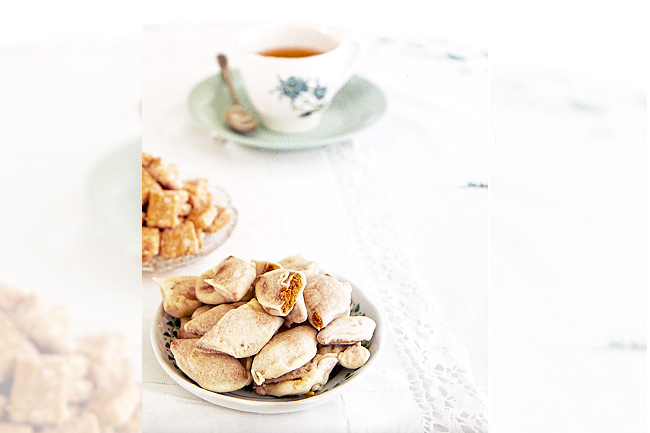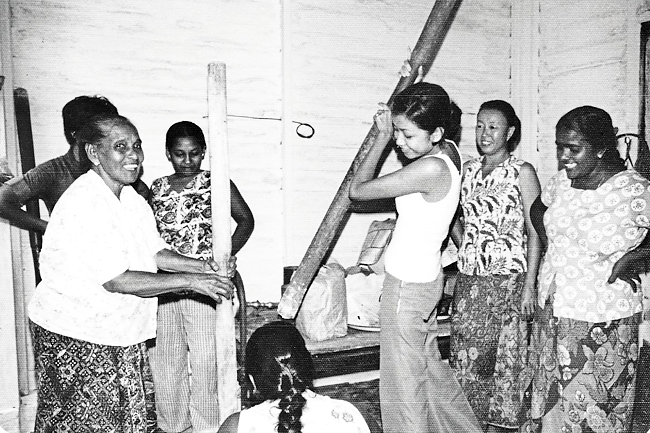ANN/THE STAR – Melaka Chetties – the original peranakans (or ‘child of the land’) of Malaysia can trace their ancestry to a tiny village near the heart of the state called Kampung Cheti.
Their roots cover over 500 years of history, when Indian merchants arrived in Melaka from Coromandel Coast on the Indian subcontinent and settled down in the area and married locals. Over the hundreds of years, this eventually developed into a hybrid Hindu community who speak a form of Bazaar Malay while maintaining cultural ties and customs to their ancestry in the new land they have now called home for centuries.
Their numbers have dwindled with time however, with now only 30 families estimated to still live in Kampung Chetti. Meanwhile, the entire Chetti community is believed to have around 2,000 members. The shrinking numbers have been attributed to migration and intermarriage with other ethnic groups.
More worrying still is the culinary passing of the guard – or lack thereof. In the Chetti community, recipes traditionally passed down the matriarchal line and were closely guarded by the women in each family.
As the community’s traditions loosened and its numbers dwindled, so too did the safe-keeping of these recipes. As a consequence, there remain only a handful of these recipe-bearers these days – many of whom are now in their seventies and eighties.
To compound this, little is known about the food of the community outside the community itself.
Despite being around for hundreds of years, these recipes had remained elusively hidden and were now facing the threat of extinction.
There was also the painful realisation that no one would remember or even know these foods once the current generation passed on. In this way, it would have died with them.




“We realised that if we don’t take steps to protect it right now, then the culinary history of the Melaka Chetti will be gone,” said member of the Melaka Chetti community Roy Anandthan Padiachee.
It was this dire need to document the recipes, culture and culinary traditions of the community for posterity that propelled the Chetti community to collaborate with intrepid food writers and documentarians Julie Wong and Dr David Neo on the first Chetti Melaka cookbook.
HOW THE COLLABORATION CAME ABOUT
Neo is an academic at Universiti Teknologi Mara with a strong interest in Peranakan culture while Wong is a renowned food journalist and editor who has produced cookbooks like Nonya Flavours: A Complete Guide to Penang Straits Chinese Cuisine.
Neo and Wong bonded over a love of Peranakan culture and both realised something needed to be done to conserve the embers of Chetti Peranakan culinary customs.
But the stars had to be aligned and Neo soon realised this when his initial efforts to reach out to the community were spurned.
Dejected, he approached the Chetties in Singapore, who agreed to work with him and Wong. The team even secured a Singapore National Heritage Trust grant for the project.
But once they started working with the community, Wong and Neo quickly sussed out that most Chetties in Singapore had entirely forgotten their roots and way of life.
“We interviewed about 20 Chetties in Singapore and they had a deep sense of identity crisis and displacement.
“I think a lot of them had converted to Christianity as well (Chetties are typically Hindu) and so even getting the recipes, we felt it was kind of here and there,” said Neo.
Eventually the entire project fell apart and this time, the timing aligned beautifully as the Chetties in Melaka were actively looking to put together a cookbook, having realised that time was running out very quickly as the matriarchs in the community were all ageing.
“We wanted to create a group that would have the right energy and chemistry because we knew this was going to be a long-haul project as we didn’t just want to do a recipe book; we wanted to do a culinary history book,” said Roy, who became the project director of the cookbook.
Thankfully, the initial seed money was generously sponsored by a senior member of the Chetti community – Palanee Maniam Subramaniam, which provided the financial impetus to get the project off the ground.
After three years of toil and graft, the fruits of their collective labour were realised with the release of the brand-new cookbook, The Melaka Chetti Kitchen: Culinary Journey of 500 Years – the first cookbook to document the recipes and culinary rituals of the Chetties in Melaka.
PUTTING THE COOKBOOK TOGETHER
In the early stages, Roy, Wong and Neo worked together to put a team of recipe collaborators who would be able to cohesively present the cultural identify that formed the heart of Chetti food.
The four key recipe contributors from the Chetti community include Nancy Goh, a Nyonya who married into the Padiachee Chetti family in 1967 and quickly mastered the art of Melaka Chetti cuisine.
Then there is Tanapakiam Ratnasamy, a true Melaka Chetti who is an expert in traditional sweet treats; and G Santha Chitty who grew up in Kampung Chetti and assumed the mantle of family cook upon her mother’s passing.
The final contributor – Indrani Pillay Sathasavam Pillay – was an accomplished Chetti home cook who sadly passed away before the publication of the book. The book is dedicated to her.
After identifying the recipe contributors, Wong – who is also the editor of the book – asked them to create a longlist of recipes for inclusion in the book and then work on categories that these recipes could be slotted into.
Because the book was the first-of-its-kind to document Chetti recipes, it was imperative to Wong that the recipes were catalogued in a way that made sense to the community and reflected their culinary identity. She herself didn’t interfere too much in their decision-making process.
“Like any kind of documentation, you need to go through a process. We started with making a list of all the dishes that the Melaka Chetties consider to be typical Melaka Chetti food. This took quite some time as they debated and agonised over the list,” said Wong.
“What to leave out was excruciatingly painful as they were quite protective of the culture but we had to leave out some recipes due to page and cost constraints.
“But we made sure that the uniquely Melaka Chetti recipes and recipes that are important to the culture are in the book,” she added.
“The interesting thing is, once the list was decided, we could then analyse the cuisine and see some patterns and categories and how best to fit them in together.
“I didn’t want to do the usual of categorising the cookbook according to meals (breakfast, lunch, dinner) or meat types (poultry, meat, seafood) and was very pleased when Santha Chitty came up with the final categorisation according to genres like Pickles, Sambals, Asam Pedas, Masak Lemak and Our Indian Heritage, etc.
“Immediately you could see what their cuisine is all about by scanning the categories: mostly Malay food with Indian and Chinese contributions. Scattered among these were the uniquely Melaka Chetti dishes,” said Wong.
THE BOOK
The Melaka Chetti Kitchen: Culinary Journey Of 500 Years is a 304-page tome with over 150 recipes that offers a bird’s eye view into the culinary customs and practices that have become the foundational structure of Chetti cuisine.
Wong and Neo have also taken great pains to illustrate the various ties that bind – from the Malay heritage (or mother culture) that has formed and moulded the Chetti predilection for ingredients like lemongrass, belacan and pandan leaf and tastes that lean towards spicy sambals, sour asam pedas and lemak-riddled pindangs and lauks.
It is also clear that Chetti cuisine still derives from the communities’ Indian ancestry, with rasam, dhal and mutton curry still a common feature in the Chetti recipe arsenal alongside influences from the Chinese Peranakans, like soy sauce, ginger and tofu.
“It’s a truly muhibah Malaysian cuisine: Malay, Chinese and Indian flavours mingle at the same table. I was surprised that such a small community has such an evolved, rich and wide repertoire of recipes,” said Wong.
The book also identifies recipes that have become unique to the Chetti Melaka table (these recipes are indicated with a star sign).
This includes dishes like sambal terung, sambal timun santan, lauk pindang ikan, sambal urap kulit timun, ikan goreng rebus cuka, kueh kanda kasturi and pengat keledek, to name a few.
THE INTENTION
Ultimately, all the collaborators on this cookbook have the same goal: to draw attention to the culture and culinary practices of the oldest Peranakans of the land and ensure the survival of these heritage foods that many Malaysians have never even heard of.
“Melaka Chetti cuisine is one of the last great unknown Malaysian cuisines. The Melaka Chetties have been unwilling to share their recipes until now.
“I believe that the women we worked with are the last generation of Melaka Chetties who learned to cook at the lap of their mothers and other womenfolk,” said Wong.
“So when you follow the recipes and cook the dishes at home and share them with others and talk about it, you will be helping to keep the food alive.
“So we all have a part to play in popularising the cuisine and introducing them in our own kitchens to keep this precious heritage going,” Wong added. – Abirami Durai




